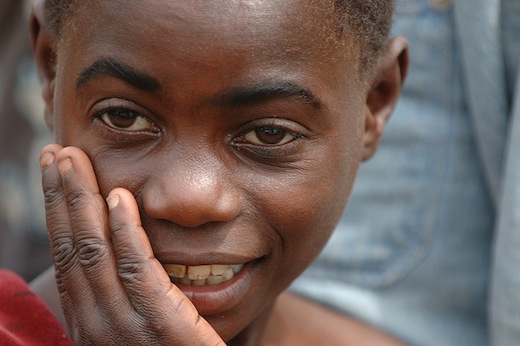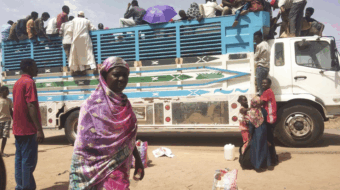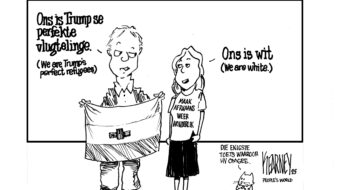
Much interest has been aroused in the United States and beyond by the new video “Kony 2012“, produced by the organization “Invisible Children.”
Do the children of the countries in which Joseph Kony’s ultra-violent Lord’s Resistance Army has been on a decades-long rampage need saving, and if so, from what and how?
In fact, millions of children in those four countries (Uganda, Democratic Republic of the Congo, Central African Republic and South Sudan) are in terrible straights.
The majority of the people in the countries in question, as in most African countries, are poor indeed, in spite of the fact that Africa is extremely rich, especially in mineral resources.
Let us look at one measure of poverty, namely Purchasing Power Parity. As compared to “nominal” Per Capita Gross Domestic Product, the PPP figure is different because it attempts an adjustment for differences in cost of living from one country to another.
According to World Bank figures for 2010, here is how three of these countries stack up. (South Sudan only just became independent from Sudan, so has no separate figures yet.) I include figures from the United States and Cuba for comparison. The Cuba figure is from other sources as Cuba is not listed in World Bank statistics.
Democratic Republic of the Congo, at $345 per year, is dead last-the poorest country in the world by this measure. Central African Republic is $783 per year. Uganda is $1,263.
The United States of America is $47,184.
Socialist Cuba is about $9,900 – far from rich, yet somehow children seem to survive better there.
How does that translate into public health statistics, as published by the United Nations World Health Organization? Again, these are 2010 statistics. And infant mortality means the number of children under one year old per thousand who die every year before their first birthday.
The infant mortality rate for the Democratic Republic of the Congo is 112. For the Central African Republic it is 106, and for Uganda it is 63. By comparison, the figure for the United States is 7. For Cuba it is 5.
Under-five mortality is a projection of the number of children under five years old who will die per year. This measure for the Democratic Republic of the Congo is 170, for the Central African Republic 159 and for Uganda 99. For the United States the figure is 8, and for Cuba it is 6.
These shocking statistics show us a holocaust of African children in the countries where Kony and his crew have operated.
However, they are similar to statistics for other African countries where Kony never set foot. African children are dying by the millions before their time.
They are dying from preventable diseases, because public health related infrastructure (safe food and water, for example) and basic health services (such as perinatal care) are inadequate to nonexistent.
They are dying because civil wars have displaced large numbers of people who then are at extra risk from disease while they are stuck for years in squalid refugee camps. They are dying of hunger and malnutrition.
The civil wars and foreign interventions (including Ugandan) in the Democratic Republic of the Congo alone have cost at least 5 million lives, including many children.
Kony, who now has at most 300 followers, is the tip of the iceberg.
One danger of focusing excessively on Kony is that it may cause us to ignore all the other factors, which cause the deaths of millions of African children, and thus the responsibility of our own society.
African peoples moved from colonialism to their current position of economic dependency on wealthy industrialized countries without being allowed to choose other routes to development.
Although Africa has much potential wealth, this has served to enrich multinational corporations based elsewhere, and a handful of African collaborators, rather than to develop African countries to the point that they could save these millions of children.
Where African leaders tried a different path, they were deposed and sometimes murdered.
Patrice Lumumba in the Democratic Republic of the Congo was killed in 1961 by agents of Belgian imperialism after being sentenced to death by the U.S. Central Intelligence Agency.
So also was murdered Thomas Sankara, president of Burkina Faso in West Africa, often called the Che Guevara of Africa, in 1987.
The list of murdered progressive African leaders is long; so is the list of puppet rulers in the pocket of wealthy foreign interests.
French, British, Belgian, U.S. and other interests have made sure that the only African leaders who survive and prosper are the ones to dance to the tune of international monopoly capital. These receive economic and military aid, part of which lines their pockets and part of which is used to repress their own people. Those who diverge from this plan are lucky to escape with their lives.
And U.S. interests are smack in the middle of this. That is why channeling U.S. funds to people like Ugandan President Museveni is a dubious idea, and why sending U.S. troops to battle Kony is a bad one.
For Americans, the battle to save African children begins at home.
People who have been galvanized by the oversimplified story in “Kony 2012” should educate themselves as to this bigger picture, and then turn their energy against the entire system that causes this holocaust of African children.
Photo: One of the many Congolese children affected by foreign intervention and civil war. (Julien Harneis/CC)










